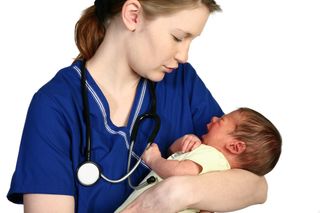US Preterm Birth Rate Reaches Decade Low

The percentage of babies born early in the United States in 2011 was the lowest in a decade, according to a new report from the non-profit March of Dimes.
In 2011 the preterm birth rate in the U.S. was 11.7 percent, down from a peak of 12.8 percent in 2006. Last year marked the fifth year in a row the preterm birth rate has dropped. A baby is considered preterm when he or she is born before the 37th week of pregnancy. The largest declines were among babies born during the 34th to 36th weeks of pregnancy — so-called "late preterm" birth. Forty-three states, the District of Columbia and Puerto Rico lowered their rates of late preterm births.
Vermont again had the lowest rate of preterm birth, at 8.8 percent.Mississippi (16.9 percent) and Puerto Rico (17.6 percent) had the highest rates, according to the March of Dimes.
The March of Dimes attributes the decline in part to actions by state health officials in 48 states, the District of Columbia and Puerto Rico, who formally set goals to lower their preterm birth rates by 8 percent by 2014.
"These results demonstrate that many premature births can be prevented with the right policies and bold leadership," said Dr. Jennifer Howse, president of the March of Dimes, which aims to prevent preterm birth. "Our national progress in reducing premature births over the past five years shows that when infant health becomes a priority, babies benefit.
The improvement translates to a roughly $3 billion savings in health care and economic costs, Howse said.
Many important organs, including the baby's brain and lungs, are not completely developed until 39 weeks, and babies should not be scheduled for delivery until then, the March of Dimes said.
Sign up for the Live Science daily newsletter now
Get the world’s most fascinating discoveries delivered straight to your inbox.
The report, called the 2012 Premature Birth Report Card, is published today (Nov. 13) on the March of Dimes site.
Pass it on: The U.S. preterm birth rate declined to 11.7 percent in 2011.
This story was provided by MyHealthNewsDaily, a sister site to LiveScience. Follow MyHealthNewsDaily on Twitter @MyHealth_MHND. We're also on Facebook & Google+.
Most Popular



